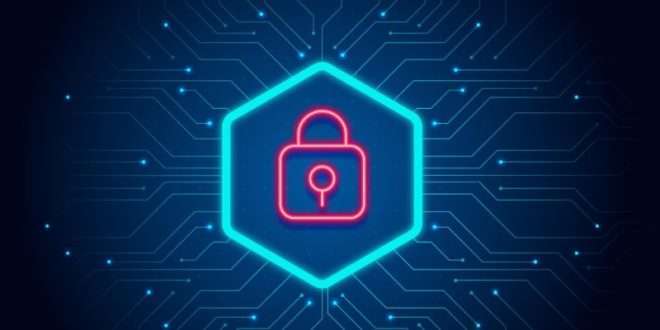In today’s interconnected digital landscape, cybersecurity is of paramount importance. The rapid advancement of web technology and web development technologies has brought incredible benefits to our lives, but it also exposes us to various threats. From cyberattacks on individuals to large-scale data breaches targeting organizations, the risks are real and ever-evolving. In this comprehensive guide, we delve into the world of cybersecurity, exploring the best practices to protect your digital assets and ensure a safe online experience.
Web Technologies and Their Vulnerabilities
Web Technologies: Foundation of the Digital Realm
Web technologies form the backbone of our digital experiences. From web development technologies to web computing and hosting, each component plays a crucial role in shaping the online world. Understanding these technologies is vital in implementing effective cybersecurity measures.
Common Web Technology Vulnerabilities
Despite the advancements, web technologies can be vulnerable to various cyber threats. Some common vulnerabilities include SQL injection, cross-site scripting (XSS), cross-site request forgery (CSRF), and insecure direct object references (IDOR). Cybercriminals exploit these weaknesses to gain unauthorized access and cause harm.
The Impact of Web Technology on Cybersecurity
As the landscape of web technologies evolves, so do the cybersecurity challenges. The integration of advanced web technologies, like Artificial Intelligence (AI) and the Internet of Things (IoT), has introduced new attack vectors. Understanding these developments is essential in fortifying your defenses.
Best Practices for a Robust Cybersecurity Strategy
Implementing Strong Authentication Mechanisms
Authentication is the first line of defense against unauthorized access. Utilizing multi-factor authentication (MFA) adds an extra layer of security by requiring users to provide multiple forms of identification before gaining access.
Keeping Software and Systems Updated
Outdated software and systems are often vulnerable to known exploits. Regularly updating operating systems, applications, and plugins is crucial in fixing security loopholes and protecting against potential threats.
Employing Secure Password Management
Weak passwords are a significant security risk. Encourage the use of strong, unique passwords and consider implementing password managers to keep track of credentials securely.
Conducting Regular Security Audits
Regular security audits help identify weaknesses in your cybersecurity defenses. Collaborate with professional penetration testers to simulate real-world attacks and uncover potential vulnerabilities.
Encrypting Sensitive Data
Encrypting sensitive data ensures that even if unauthorized individuals gain access to it, they won’t be able to decipher the information. Implement robust encryption protocols for data storage and transmission.
Educating Users on Cybersecurity
Human error remains a leading cause of security breaches. Conduct regular cybersecurity awareness training for employees and users to foster a security-conscious culture.
Backing Up Data Regularly
Data loss can be devastating, whether due to cyberattacks or hardware failures. Regularly backing up your data to secure locations mitigates the impact of potential incidents.
The Power of Cloud Security in 2023
Leveraging Cloud Security Solutions
Cloud computing is an integral part of modern business operations. Embrace cloud security solutions to protect data, applications, and infrastructure hosted in the cloud.
Cloud Compliance and Data Privacy
Adhere to stringent cloud compliance standards and data privacy regulations. Working with cloud providers that prioritize security and compliance is crucial for safeguarding sensitive information.
Final Words
As we navigate the complexities of the digital era, prioritizing cybersecurity is non-negotiable. By understanding web technologies and their vulnerabilities, implementing robust security practices, and leveraging the power of cloud security, you can create a resilient defense against cyber threats. Safeguarding your digital world in 2023 requires continuous vigilance, education, and collaboration to stay one step ahead of the ever-evolving threats.
Commonly Asked Questions
Q1: What is the most common cybersecurity threat in 2023?
A1: In 2023, phishing remains one of the most prevalent cybersecurity threats. Cybercriminals use deceptive tactics to trick users into revealing sensitive information or downloading malicious software.
Q2: How can I protect my small business from cyberattacks?
A2: To protect your small business, start by implementing strong authentication, keeping software updated, and educating your employees about cybersecurity best practices. Consider outsourcing security services to a reputable provider for comprehensive protection.
Q3: What role does AI play in cybersecurity?
A3: AI is becoming increasingly important in cybersecurity. It can analyze vast amounts of data, detect anomalies, and identify potential threats in real-time, enabling organizations to respond proactively to emerging risks.
Q4: How do cyber threats impact cloud computing?
A4: Cyber threats pose significant risks to cloud computing, including data breaches, service disruptions, and unauthorized access. Cloud security measures, such as encryption and access controls, are crucial to mitigate these risks.
Q5: How often should I conduct a security audit?
A5: Conduct security audits at least annually or whenever there are significant changes to your IT infrastructure. Regular audits help identify vulnerabilities and ensure ongoing compliance with security best practices.
 webfily
webfily



